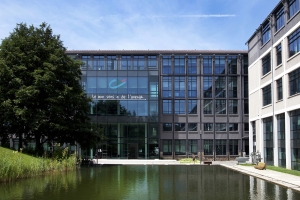CASA innovates with new combined LM offer
Crédit Agricole surprised the market in March by becoming the first French bank not to call a perpetual hybrid Tier 1 instrument, in line with increasingly economic bases for such decisions in Europe, but softened the impact with an any and all tender for the securities completed in May, in an innovative strategy to maintain an investor-friendly stance.
The French issuer on 17 March announced its non-call decision on its $889.9m 6.637% non-step Tier 1, callable on 31 May, and the any and all tender for the 144A/Reg S securities as well as a EUR371.2m CMS floater callable in February 2018. It also flagged a tender offer of up to EUR1.5bn, less the aggregate of the non-step buyback, for four step-up Tier 1 securities. The intention to launch the offers was announced as subject to ECB approval.
“Crédit Agricole SA expects that the 6.637% Notes will be grandfathered as Tier 1 capital until the end of 2021,” it said. “Their regulatory capital treatment after 2021 remains at present uncertain.
“Taking possible scenarios into account, Crédit Agricole SA believes that the announced Purchase Price offers an attractive exit price for investors wishing to reduce their positions in the Notes. The proposed Purchase Prices/Tender Spreads for the other five Notes are at a premium to secondary market levels, in line with observed public tender offers in the market.”
The bank also said that “call decisions on debt instruments without step-up or other incentives to redeem may be subject to further economic consideration on the basis of market and regulatory developments”. Market participants said that the strategy reflected a shift in European practices towards US behaviour, where economic considerations are understood to be prime.
Olivier Bélorgey, head of the financial management department at Crédit Agricole, said the tender was aimed at finding an investor-friendly way through this development.
“We anticipate that the European market will evolve towards the American market, with more economic factors in the call or non-call decision,” he said. “And we wanted to deliver the message that, amid this evolution, the world can be something other than only black and white: it is not only a question of, ‘do I call, or do I not call’; you can rather have an innovative attitude, trying to take into account not only your own short-sighted interest as an issuer based on whether it is economic for you to do so, but also your long term relationship with investors.
“That’s why we have structured our non-call decision with an any and all tender offer at a price that we consider to be fair between issuer interest and investor interest on a long term basis. And my feeling is that the market has, after some I would say emotional reaction just after the announcement, understood the rationale behind the operation, and that the vast majority of investors consider the offer to be fair and well balanced.”
The cash price for the 6.637% notes was set at 95 in advance and Bélorgey noted that since 2009 the average price had been around 92 and that, had the issuer not launched the tender, the price would likely have dropped to the 80% area. Indeed, an analyst noted that the market impact of the non-call announcement had been limited.
“We would note the decision not to call is a surprise to us — especially as the bank did not need the grandfathered capital benefit in our view,” he said, “but the downside is limited by the any and all tender — it is around 1.5 points below where it was trading.”
The CMS floater had already passed its first call, and the price was set at 78. The four step-ups — all of which had been trading above par — were 7.589% and 8.125% sterling bonds, an 8.375% US dollar and a 7.875% euro, included to optimise the bank’s liabilities and provide liquidity to investors.
All the prices and tender spreads were, unusually, set well in advance to give investors maximum transparency on the overall strategy of the issuer, according to Véronique Diet Offner in hybrid capital and liability management, DCM solutions, at Crédit Agricole CIB — even if this left the issuer exposed to market fluctuations.
“The results overall are very good,” she said. “Investors came on board in terms of the strategy, notably for the 6.637% non-step Tier 1, where we had almost 88% participation, which is a very high hit rate in terms of tenders.”
$782.972m of the US dollar notes were tendered and EUR120.456m of the CMS floaters, and all of the securities tendered in the four step-ups during the early-bird period were bought back since the EUR415.650m tendered was less than the EUR679.211m available after the non-step buy-back.

